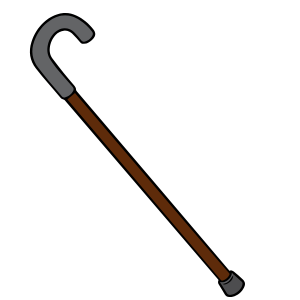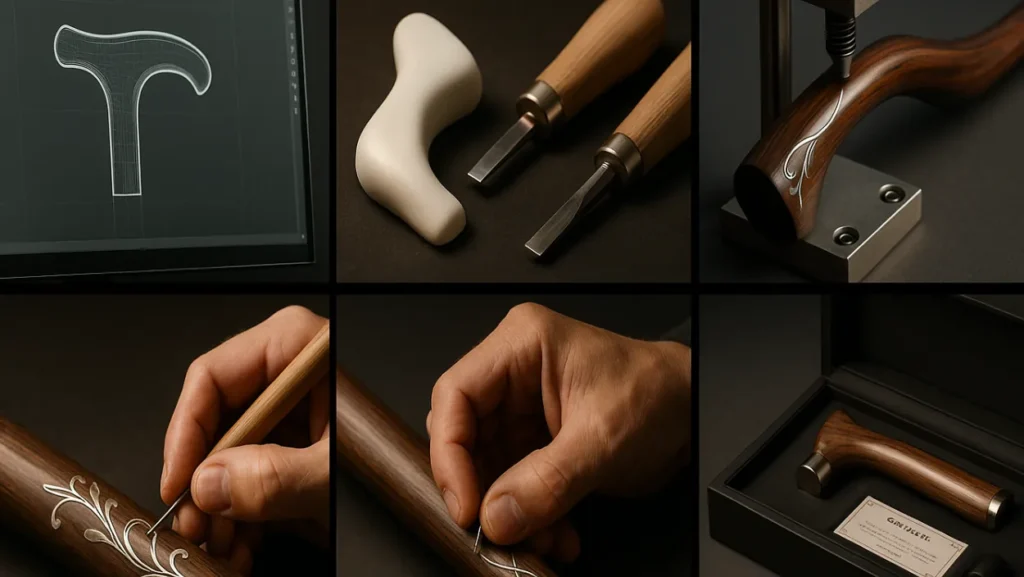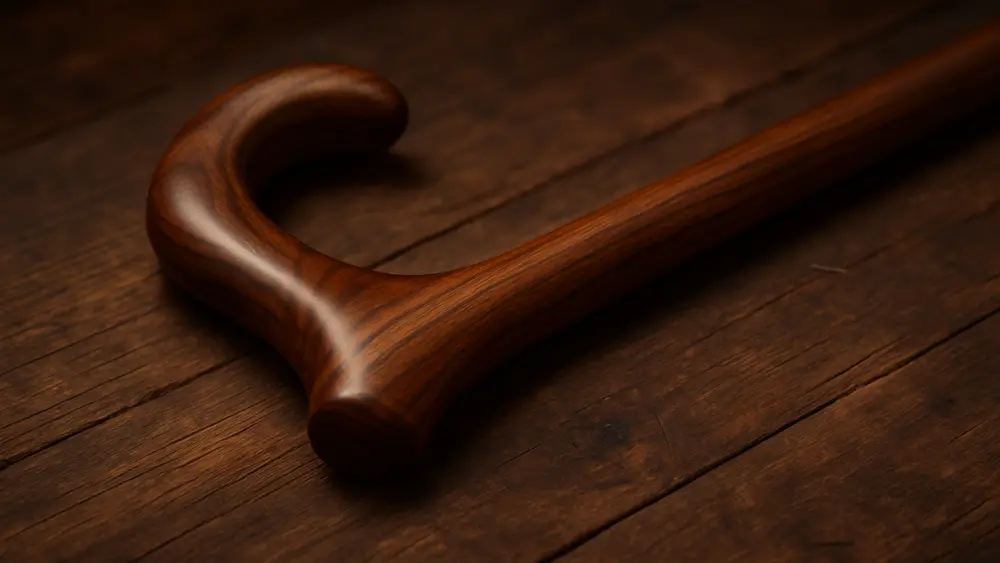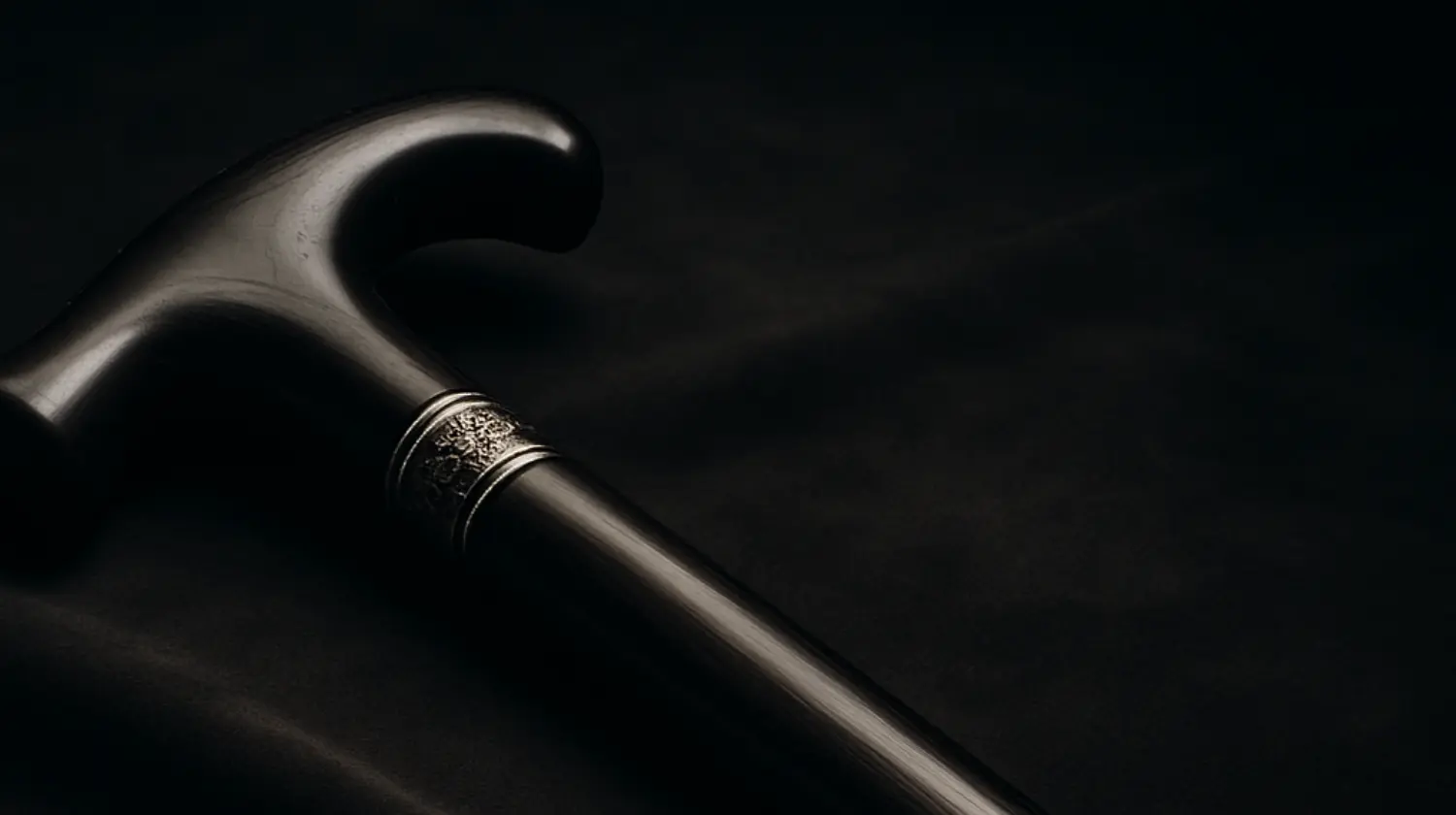
How Is the Price of a Cane Determined?
Each time a customer steps into the Asadast Gallery and their eyes catch the gleam of price tags beneath handcrafted wooden canes, a question—spoken or not—often rises in their gaze:
“Why do these canes start at hundreds bucks and sometimes reach into the tens of thousands?”
To answer that, we must look beyond the price tag. Because the cost of a cane isn’t just a number on paper—it’s a story. A story of raw material transformed into art, of skill and societal value, of technical assurance and the quiet emotion a handcrafted object stirs at first touch.
In this article, written in a balanced, respectful tone—neither overly formal nor overly casual—we will walk you through every step that builds the final price. By the end, you’ll understand why the cane shining before you carries a distinct price label—one that stems from value, not coincidence.


the cost of a cane isn’t just a number on paper—it’s a story.
Raw Wood: The Cost That Begins Before the First Cut
The Rare Origin of Imported Wood
A luxury cane is often crafted from rare woods. Imagine a piece of walnut from Georgia’s ancient forests or a block of Persian ironwood (arjan) sourced from the Zagros mountains—long before reaching the artisan’s bench, this timber has traveled a costly path. Legal harvesting, transport, customs duties, environmental taxes, and kiln-drying to reduce moisture to below 10%—each stage incurs a separate cost.
Premium lumber can cost up to five times more than standard Iranian wood, but this higher price significantly reduces the risks of warping, cracking, or hidden defects—meaning greater security for your investment.
The Time Factor: Dryness Doesn’t Come Easy
Kiln-drying high-grade wood takes seven to twelve months. Labor, energy, and storage space—all contribute to the wood’s cost. By the time the master even brings a blade near the timber, a large part of the final price has already formed, silently rooted in the tree’s own journey.
Design: Where Imagination Shapes Value
Ideas Aren’t Free: The Cost of Conceptualization
When an artist spends hours designing a phoenix- or dragon-inspired cane handle, their creative time must be factored into the value. The process—from rough sketches and digital 3D modeling to a clay or resin prototype—may remain unseen, but it’s all embedded in the “design cost.”
Ergonomics: The Hidden Science Behind Comfort
If a cane’s handle feels so natural that you forget it’s a supportive tool, there’s hidden science behind that ease. Biomechanical data, ergonomic testing, hand-scan files, adaptive design software, and 3D-printed prototypes all contribute to a better product. While these elevate the price, they create a cane that isn’t just beautiful—it becomes an extension of your hand.
Craftsmanship: The Golden Seconds Under the Blade
Artisan vs. Machine
In mass production, a CNC machine can shape a cane shaft in minutes. At Asadast, however, artisans spend dozens of hours manually refining each piece with planes, chisels, and ultra-fine sandpaper—ensuring not a single scratch mars the grain. These are golden seconds machines ignore but craftsmanship honors generously.
Intricate Embellishments: Carving, Pyrography, Inlays
Add a flowing arabesque or the yellow eyes of a mythical bird to the handle, and you’re adding dozens of carved shavings and minutes that never return. Infuse resin with silver dust or botanical pigments into engraved grooves, and what emerges is not just ornament—it’s “handcrafted art” as reflected in the price.
Protection: Preserving the Look, Feel, and Scent
Specialty Oils
Multi-step Danish oils or carnauba wax require each layer to rest, polish, and be reapplied—often over five full days. This protective process shields the cane from winter’s dryness and summer’s humidity alike.
Premium Cane Tips
Whether it’s nitrile rubber with diagonal treads or a custom all-silicone quad base, the bottom tip isn’t a mass-market part—it’s chosen specifically for a premium cane. Though small, it plays a big role in safety—and subtly influences the final price.

Certificates and Guarantees: Numbers That Offer Peace of Mind
Has the cane passed the 100,000-step fatigue test? Does it come with a breakage replacement guarantee? After-sales services cost money, but they reassure the buyer that they’re not just holding a piece of wood—they’re carrying a trusted companion, one that can be repaired or replaced if needed.
Market Scarcity: The Invisible Hand That Adds Value
Limited supply combined with growing demand naturally leads to added value. When only five to ten pieces of a design are made annually, buyers know their cane remains rare. This exclusivity is a gift that the market offers to craftsmanship—justifying an elevated price.
Customization: A Signature Engraved in Wood
Engraving a name, embedding gemstones or metals, or adjusting the length precisely based on a user’s 3D body scan—any request that personalizes the cane adds cost. Like a tailored suit, a custom cane fits uniquely—and its price reflects that singularity.
In Summary: The Price of a Cane, A Journey from Forest to Marketplace
When you see the price on a luxury cane, remember the journey: from an aged tree on a Caucasus slope nourished ring by ring, to the calloused hands of an artisan pouring hours into every curve; from the ergonomic designer who measured elbow angles, to the shopkeeper who displays the piece so you can meet it directly.
The final number tells the story of all these moments and efforts. Read properly, it assures the buyer that the cost covers more than wood and time—it includes cultural value, technical safety, and the aesthetic joy that will accompany them with every step.
The Best Cane Price—Only at Asadast
At Asadast, every cane is crafted from rare wood, built upon a unique design, and tested rigorously for durability. Before delivery, it is adjusted precisely to your height and needs, then packaged with an extra tip, a warranty card, and artisanal wrapping.
If you seek more than a mobility aid—something collectible and enduring—the doors of Asadast Gallery are open to you. Here, price is not a barrier, but the true language of value.
The Best Handmade Cane Price—Only at Asadast
At Asadast, every cane is crafted from rare wood, built upon a unique design, and tested rigorously for durability. Before delivery, it is adjusted precisely to your height and needs, then packaged with an extra tip, a warranty card, and artisanal wrapping.
If you seek more than a mobility aid—something collectible and enduring—the doors of Asadast Gallery are open to you. Here, price is not a barrier, but the true language of value.
Related Posts
The Benefits of Walnut Wood Canes: A Balance of Elegance, Durability, and Heritage
The Benefits of Walnut Wood Canes: A Balance of Elegance, Durability, and Heritage At first…
Learning More About the Mentashā (Dervish Staff)
Learning More About the Mentashā (Dervish Staff) Ancient traditions and rituals in Iran and many other…
The Benefits of an Ebony Cane: Black Majesty in Service of Health
How well this mistaken ideas off denouncing pleasure & praisings will give you complete.



